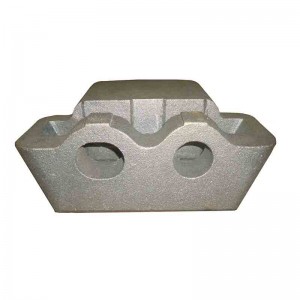Nov . 12, 2024 10:40 Back to list
cast iron drainage
The Importance of Cast Iron Drainage Systems
Cast iron drainage systems have stood the test of time and remain a pivotal aspect of modern plumbing and waste management. Used extensively in both residential and commercial buildings, cast iron has several advantages that enhance the durability, efficiency, and overall performance of drainage systems. This article delves into the unique characteristics of cast iron drainage systems, their benefits, and application in today's infrastructure.
One of the standout features of cast iron drains is their remarkable strength. Cast iron pipes can withstand significant pressure and heavy loads, making them ideal for urban environments where ground conditions may vary and where they must bear the weight of vehicles and other structures above them. This durability ensures that cast iron pipes are less prone to breakages and leaks, reducing the long-term maintenance costs that can burden property owners and municipalities alike.
In addition to their robust physical properties, cast iron drainage systems also exhibit excellent resistance to corrosion. Though all piping systems can be affected by corrosion over time, cast iron tends to hold up well, especially when installed correctly. Modern advancements, such as the introduction of protective coatings and the use of trenchless installation techniques, have further enhanced their resistance to environmental factors that can lead to degradation.
Another significant benefit of cast iron drainage is its acoustic properties. Unlike plastic or PVC pipes, which can transmit sound more readily, cast iron pipes have a natural ability to dampen noise caused by the flow of water. This characteristic is particularly advantageous in urban areas and multi-story buildings where sound pollution can be a concern. The quieter operation of cast iron drainage systems contributes to a more pleasant living and working environment.
cast iron drainage

The installation of cast iron drainage systems can be slightly more complicated than other materials, but this initial challenge is often outweighed by the long-term benefits. For instance, the weight of cast iron pipes may require skilled labor and specialized equipment for transportation and installation, but the end result is a system that can last for decades, often outliving those made from lighter materials. As building codes evolve and sustainability becomes increasingly crucial, cast iron's longevity is an attractive feature for architects and builders alike.
Moreover, cast iron has a notable environmental edge. The material is 100% recyclable, which aligns with global sustainability efforts. When cast iron pipes reach the end of their lifespan, they can be melted down and repurposed, thus minimizing waste and promoting a circular economy. This eco-friendly aspect makes cast iron drainage systems a responsible choice for environmentally-conscious builders and developers.
In terms of design flexibility, cast iron is also advantageous. The variety of fittings, sizes, and configurations makes it possible to create customized drainage solutions that meet specific building requirements. Whether for residential homes, industrial facilities, or commercial buildings, cast iron can be adapted to suit various designs and layouts.
In conclusion, cast iron drainage systems represent a blend of durability, efficiency, and sustainability that is hard to match. As urbanization continues and the demand for reliable infrastructure grows, the role of cast iron in drainage will likely remain prominent. Its ability to withstand the rigors of time and environmental challenges makes it a trusted choice for engineers and builders. By choosing cast iron for drainage solutions, stakeholders can ensure the longevity and reliability of their systems, ultimately contributing to healthier, cleaner urban environments.
-
Durable Cast Steel Concrete Pipe Mold Bottom Rings & Base Trays
NewsAug.23,2025
-
Centrifugally Cast Iron Water Main Pipe for Reliable Mains
NewsAug.22,2025
-
Durable Centrifugally Cast Iron Water Main Pipe
NewsAug.11,2025
-
Centrifugally Cast Iron Water Main Pipes for Reliability
NewsAug.10,2025
-
High-Quality Centrifugally Cast Iron Water Main Pipes
NewsAug.09,2025
-
Durable Cast Iron Water Main Pipe & Drainage Solutions
NewsAug.08,2025


